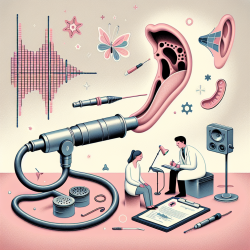Welcome to the Urban Jungle: Unveiling the Adolescent Neural Urbanome
In the bustling world of urban environments, a new framework is emerging that promises to reshape our understanding of adolescent development. This framework, known as the "Adolescent Neural Urbanome," is a groundbreaking approach that delves into the intricate relationship between urban living and the neural development of adolescents. For educators and practitioners in the field of special education, this framework offers valuable insights that can enhance their understanding and support of students in urban settings.
The Power of the Urbanome Framework
The Adolescent Neural Urbanome framework, as presented in the research article "Building towards an adolescent neural urbanome: Expanding environmental measures using linked external data (LED) in the ABCD study," provides a comprehensive lens through which to examine the impact of urban environments on adolescent neural development. This framework categorizes newly geocoded information into various domains, allowing researchers to explore the complex interplay between environmental factors and adolescent well-being.
Key Takeaways for Practitioners
For practitioners in special education, the Urbanome framework offers several key takeaways that can be applied to enhance their practice:
- Understanding Environmental Influences: The framework highlights the significant impact of environmental contexts, both social and physical, on adolescent neural and behavioral development. By recognizing these influences, practitioners can better tailor their approaches to support students' unique needs.
- Addressing Inequities: The Urbanome framework emphasizes the importance of identifying structural contextual factors that contribute to inequalities in children's environments. Practitioners can use this knowledge to advocate for equitable access to resources and opportunities for all students.
- Promoting Social Justice: By adopting a social justice-oriented approach, practitioners can prioritize beneficence and work towards creating inclusive and supportive environments for historically minoritized groups.
Encouraging Further Research
The Adolescent Neural Urbanome framework serves as a call to action for practitioners to engage in further research and exploration. By delving deeper into the relationships between environmental factors and adolescent development, practitioners can contribute to a growing body of knowledge that informs evidence-based practices and policies.
Conclusion
As we navigate the complexities of urban environments, the Adolescent Neural Urbanome framework offers a valuable tool for understanding and supporting adolescent development. By embracing this framework, practitioners in special education can enhance their skills, promote social justice, and contribute to a brighter future for all students.
To read the original research paper, please follow this link: Building towards an adolescent neural urbanome: Expanding environmental measures using linked external data (LED) in the ABCD study.










